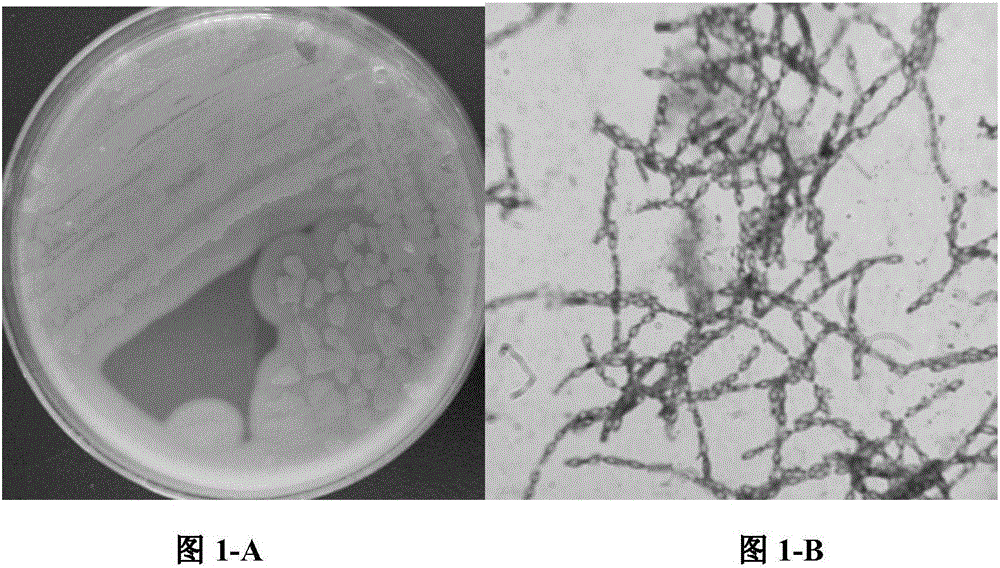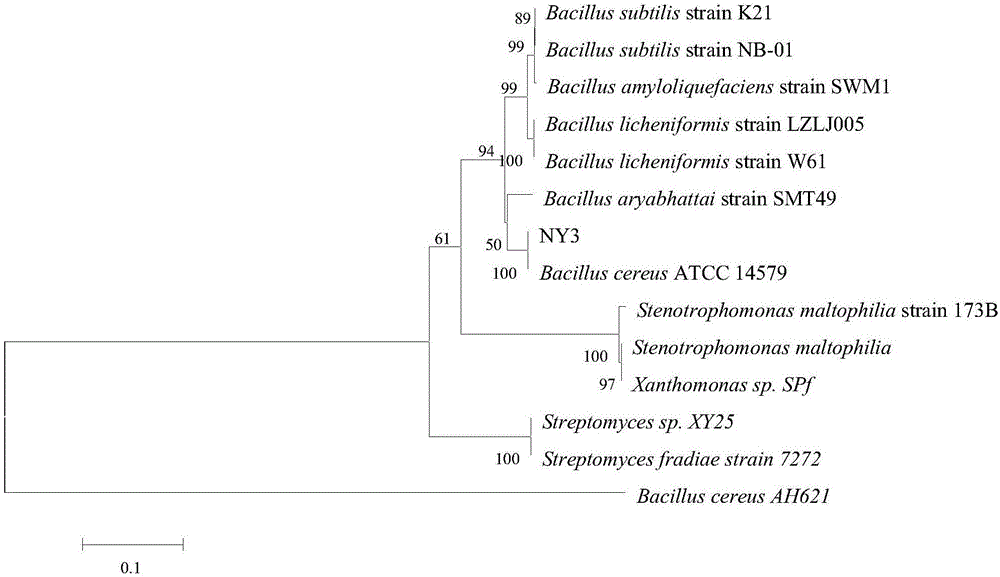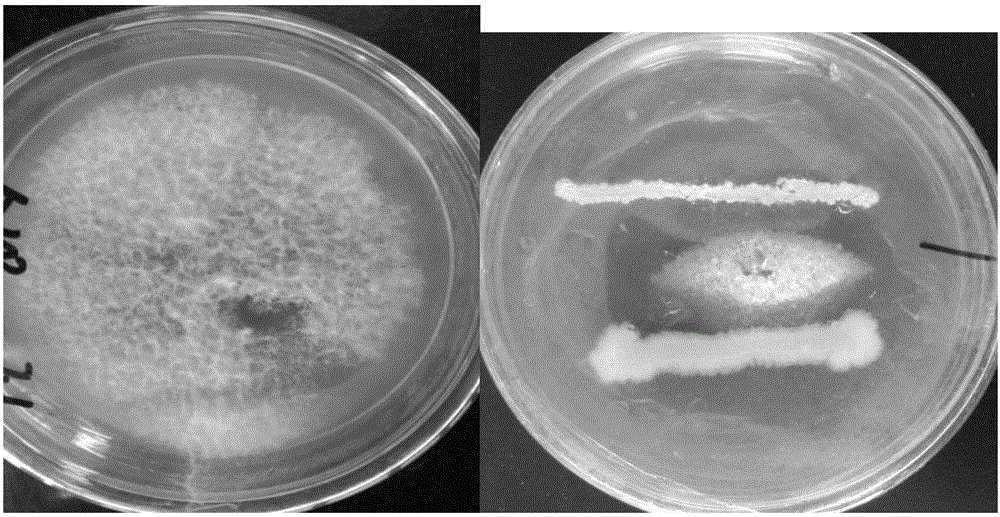Bacillus cereus strain for preventing and treating melon root rot, and culture method and application thereof
A Bacillus cereus, culture method technology, applied in the directions of microorganism-based methods, applications, pest control, etc., can solve the problem of no control effect of Fusarium solani on melons, and achieve a wide range of sterilization applications and long shelf life. long-term, stable effect
- Summary
- Abstract
- Description
- Claims
- Application Information
AI Technical Summary
Problems solved by technology
Method used
Image
Examples
Embodiment 1
[0042] Example 1. Isolation and Identification of Bacillus cereus.Frankland NY3
[0043] 1. Isolation of Bacillus cereus NY3
[0044]Select soil samples from the muskmelon rhizosphere soil in greenhouses in Linyi City, Shandong Province, and use a sterilized sampling shovel to collect 5-25 cm deep soil from the muskmelon rhizosphere with good growth in the same area. Store in a refrigerator at 4°C. When separating, weigh 10g of soil sample and put it into a conical flask filled with sterile water and glass beads, shake it fully for 30 minutes, after the soil sample is evenly dispersed, let it stand for 10 minutes to form a bacterial suspension with a concentration of 0.1g / ml. The bacterial suspension was diluted to obtain a concentration of 10 -2 , 10 -3 , 10 -4 , 10 -5 , 10 -6 , 10 -7 g / ml bacterial suspension. Heat each gradient dilution in a water bath at 80°C for 20 minutes, absorb 0.1ml of each gradient dilution of soil suspension, spread it on a chitosan selectiv...
Embodiment 2
[0055] The propagation of embodiment 2, NY3 bacterial classification
[0056] The culture method of above-mentioned bacillus cereus (Bacillus cereus) NY3, step is as follows:
[0057] (1) Bacillus cereus (Bacillus cereus) NY3 was activated and cultured on LB plate medium at 37°C for 20 hours to obtain an activated strain;
[0058] Described LB plate culture medium, every liter of components is as follows:
[0059] Tryptone 10g, yeast extract 5g, sodium chloride 5g, agar powder 18g, water to 1000mL, pH 7.2;
[0060] (2) Transfer the activated bacterial strain prepared in step (1) to LB liquid medium, and cultivate the seeds for 18 hours at a temperature of 37° C. and a shaker speed of 200 rpm to obtain a seed solution;
[0061] Described LB liquid culture medium, per liter composition is as follows:
[0062] Tryptone 10g, yeast extract 5g, sodium chloride 5g, water to 1000mL, pH 7.2;
[0063] (3) Inoculate the seed solution prepared in step (2) into the fermentation medium ...
Embodiment 3
[0068] Embodiment 3, the inhibitory action of NY3 bacterial strain to the hyphae of muskmelon root rot
[0069] 1. Inoculate the muskmelon root rot bacterial block in the center of the PDA medium plate. After pre-cultivating at 28°C for 1 day, inoculate the Bacillus cereus (Bacillus cereus) NY3 strain in the center of the plate and 2cm away from the center, and cultivate in a 28°C incubator 3d, observe the zone of inhibition, and repeat the experiment three times. The average width of the antibacterial zone was measured to be 16mm.
[0070] 2. Take 500 μL of the concentration of 1.0×10 7 The melon root rot bacteria spore suspension of cfu / ml is sub-packed in the 1.5ml centrifuge tube, then adds the Bacillus cereus NY3 fermented liquid that 50 μ L embodiment 2 prepares in the centrifuge tube, the matched group adds equal amount of sterile water, Mix them with the spore suspension of Melon Fusarium wilt respectively, and then culture them at a constant temperature of 28°C. Ea...
PUM
 Login to View More
Login to View More Abstract
Description
Claims
Application Information
 Login to View More
Login to View More - R&D
- Intellectual Property
- Life Sciences
- Materials
- Tech Scout
- Unparalleled Data Quality
- Higher Quality Content
- 60% Fewer Hallucinations
Browse by: Latest US Patents, China's latest patents, Technical Efficacy Thesaurus, Application Domain, Technology Topic, Popular Technical Reports.
© 2025 PatSnap. All rights reserved.Legal|Privacy policy|Modern Slavery Act Transparency Statement|Sitemap|About US| Contact US: help@patsnap.com



